Car-bon Footprint
The cars with the highest and lowest CO2 emissions revealed
The deadline to ban the sale of new cars with internal combustion engines is quickly approaching, as the UK plans to enact this by 2030. This comes as the world makes an effort to overturn the environmental damage the planet has suffered.
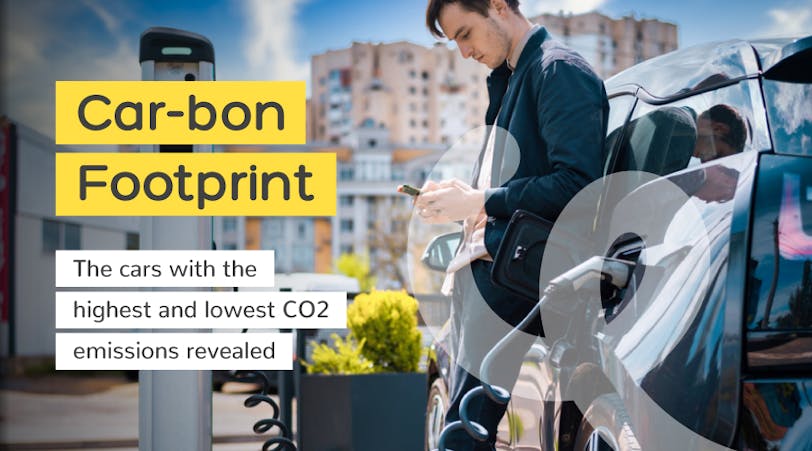
Internal combustion engines and hybrid cars produce a wide range of emissions, however, electric vehicles are miles ahead, as they produce zero tailpipe emissions. Granted, charging your EV, for example, emits CO2.
With UK drivers owning a wide range of cars, you may be wondering which ones produce the most and least emissions. Our experts at DriveElectric have researched the 100 most popular cars in the UK to determine which cars produce the most and least emissions. We also discovered how many trees it would take to offset those emissions.
And if you wanted to get to terms with an electric vehicle ahead of the ICE sale ban, check out our electric car leasing offers. Additionally, we also offer electric van leasing.
Cars with the worst CO2 emissions of the 21st century
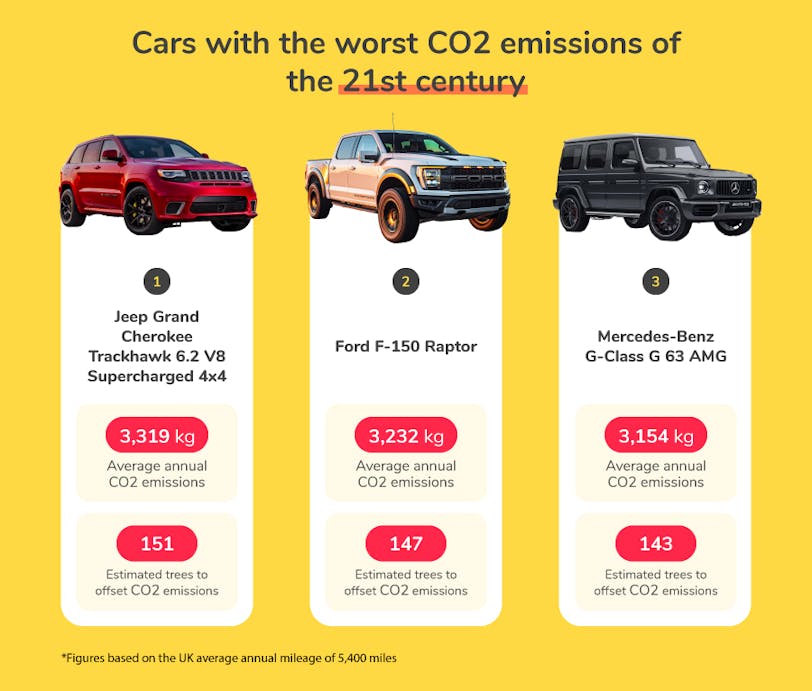
1. Jeep Grand Cherokee Trackhawk 6.2 V8 Supercharged 4x4
Average Annual CO2 Emissions (kg): 3,319 | Estimated Trees to Offset CO2 Emissions: 151
The car with the worst emissions of all time is the Jeep Grand Cherokee Trackhawk, which produces around 3,319kg of CO2 emissions annually from its tailpipe. With such a huge number of emissions, you’d need to plant an estimated 151 trees to offset your emissions yearly from driving this vehicle.
2. Ford F-150 Raptor
Average Annual CO2 Emissions (kg): 3,232 | Estimated Trees to Offset CO2 Emissions: 147
The car with the second-biggest environmental impact is the Ford F-150 Raptor, which produces 3,232kg of CO2 tailpipe emissions each year, on average. Again, with such a colossal number of emissions, you’ll need to plant a lot of trees to offset it, estimated at 147 trees per year.
3. Mercedes-Benz G-Class G 63 AMG
Average Annual CO2 Emissions (kg): 3,154 | Estimated Trees to Offset CO2 Emissions: 143
And in third place, we have the Mercedes-Benz G63, which also produces more than 3,000kg in tailpipe CO2 emissions each year. It would take an estimated 143 trees to offset your emissions with this car each year.
The most popular cars in the UK that produce the most emissions
These next two sections look at the 100 most popularly owned cars in the UK, using UK government data to see which models are the most licensed. We also included the top 15 most popularly owned electric vehicles in the UK, using the same dataset.
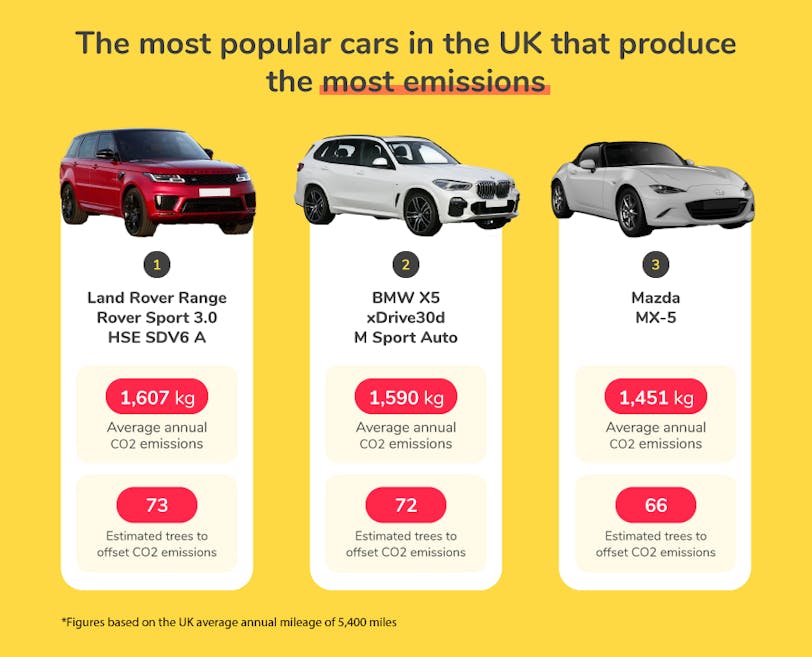
1. Land Rover Range Rover Sport 3.0 HSE SDV6 A
Average Annual CO2 Emissions (kg): 1,607 | Estimated Trees to Offset CO2 Emissions: 73
We have the Range Rover Sport as the car with the most emissions. Annually, this car produces around 1,607kg of CO2 emissions, which would mean you’d have to plant approximately 73 trees to offset your emissions.
2. BMW X5 xDrive30d M Sport Auto
Average Annual CO2 Emissions (kg): 1,590 | Estimated Trees to Offset CO2 Emissions: 72
The BMW X5 xDrive30d comes in with the second-highest emissions, narrowly behind the Range Rover. On average, this car produces around 1,590kg of CO2, which means it would also take around 72 trees to cancel out those emissions.
3. Mazda MX-5
Average Annual CO2 Emissions (kg): 1,451 | Estimated Trees to Offset CO2 Emissions: 66
And the car that produces the third-most emissions in the UK is the Mazda MX-5, with an average of 1,451kg of CO2 produced annually. You would have to plant at least 66 trees to offset those emissions with this car.
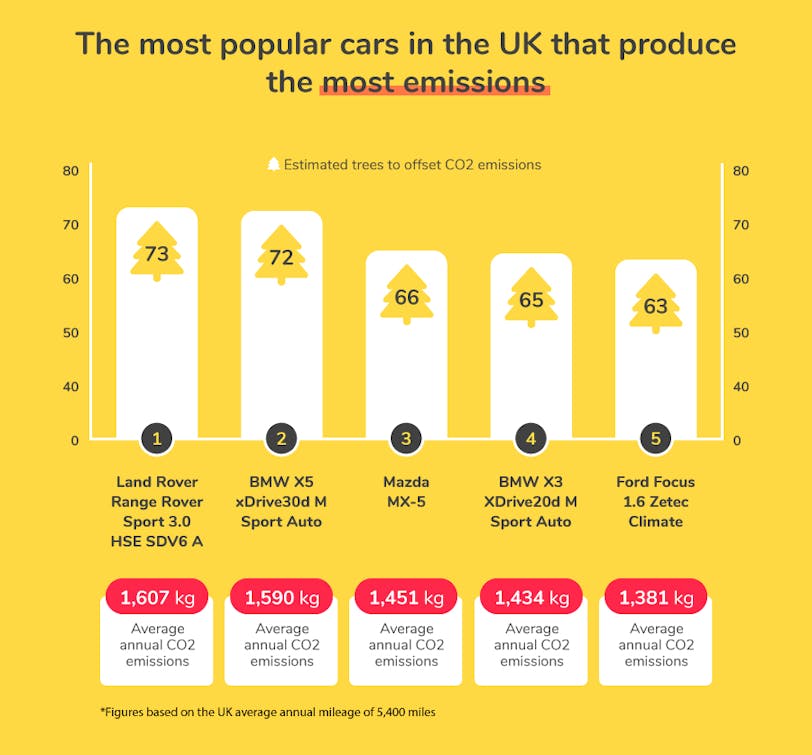

The most popular cars in the UK that produce the least emissions
As demonstrated below, EVs perform very well in producing low amounts of CO2 emissions. And with ICE vehicles being gradually phased out, we could see EVs increasing in popularity over the next few years. Searches for EVs on Google have increased by 333.33% over the last five years, further highlighting the increased interest in this type of vehicle.
Furthermore, we should highlight that EVs have a heavier body compared to ICE vehicles, which is due to the sheer size and weight of the batteries in EVs. This is significant as heavier vehicles tend to require much more power or fuel to operate. Yet, despite this, EVs still performed much better than ICE vehicles. The Toyota Yaris Icon, the best-performing ICE vehicle, produced 730kg of CO2 annually. This is three times as much as the best-performing EV and more than double the worst-performing EV.
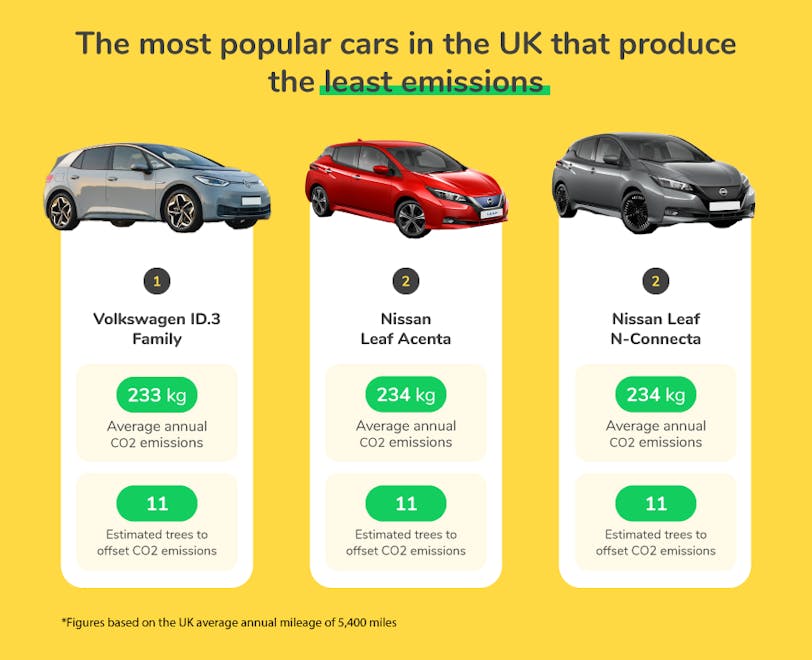
1. Volkswagen ID.3 Family
Average Annual CO2 Emissions from Charging (kg): 233 | Estimated Trees to Offset CO2 Emissions: 11
The Volkswagen ID.3 Family is the car with the smallest amount of CO2 emissions. As this is an electric vehicle, it has zero tailpipe emissions.
However, the emissions produced from charging the car are around 233kg. This figure is based on this model having a real-world range of 262 miles and a usable battery capacity of 62 kWh. Given those figures, the ID.3 does around 4.2 miles per kWh, meaning it would take 1,278 kWh to travel 5,400 miles.
Lastly, an average of 0.182kg of CO2 is produced per kWh in the UK, which means to charge the ID.3 Family for the year, you’d emit 233kg of CO2 annually. To offset this figure, however, it would take just 11 trees, which is much lower than the ICE and hybrid vehicles we researched.
2. Nissan Leaf Acenta
Average Annual CO2 Emissions from Charging (kg): 234 | Estimated Trees to Offset CO2 Emissions: 11
Coming in as the vehicle with the joint-second lowest CO2 emissions, we have the Nissan Leaf Acenta, which is also an electric vehicle. Since this car has a range of 168 miles and a usable battery capacity of 40 kWh, it’d take 1,286 kWh to travel 5,400 miles. As such, annually, you’d produce 234kg of CO2 emissions from charging this vehicle.
2. Nissan Leaf N-Connecta
Average Annual CO2 Emissions from Charging (kg): 234 | Estimated Trees to Offset CO2 Emissions: 11
Sharing second place, we have another Nissan Leaf variant, the N-Connecta, which also has a real-world range of 168 miles and a usable battery capacity of 40 kWh. As such, the average annual CO2 emissions from charging this car would be 234kg.
3. Tesla Model 3 Long Range AWD
Average Annual CO2 Emissions from Charging (kg): 246 | Estimated Trees to Offset CO2 Emissions: 11
Taking third place is the Tesla Model 3, which has a real-world range of 300 miles and a usable battery capacity of 75 kWh. As such, it would take around 1,350 kWh to travel the annual 5,400 miles, producing 246kg of CO2. To cancel out your annual emissions with this vehicle it would take an estimated 11 trees.
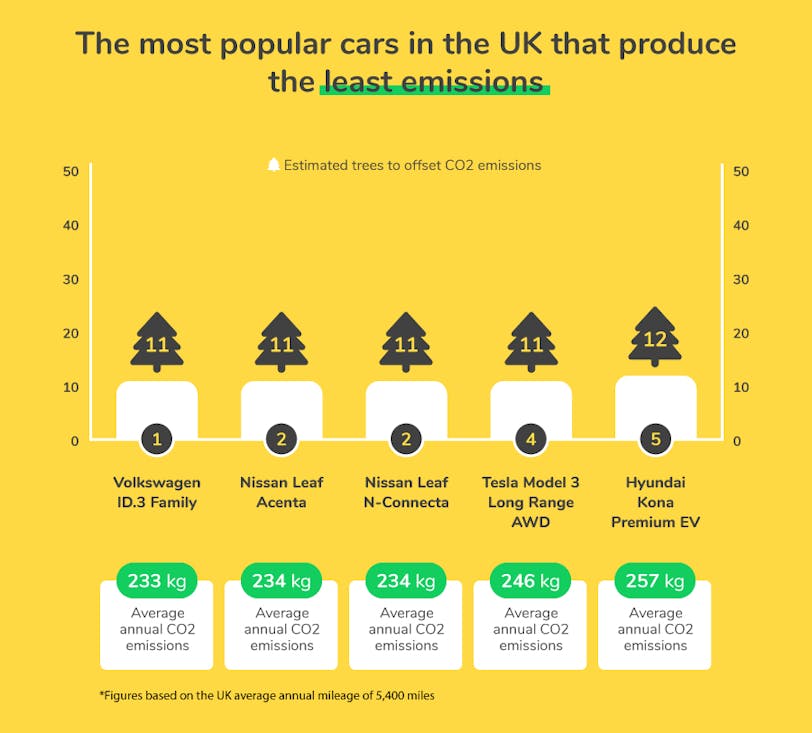
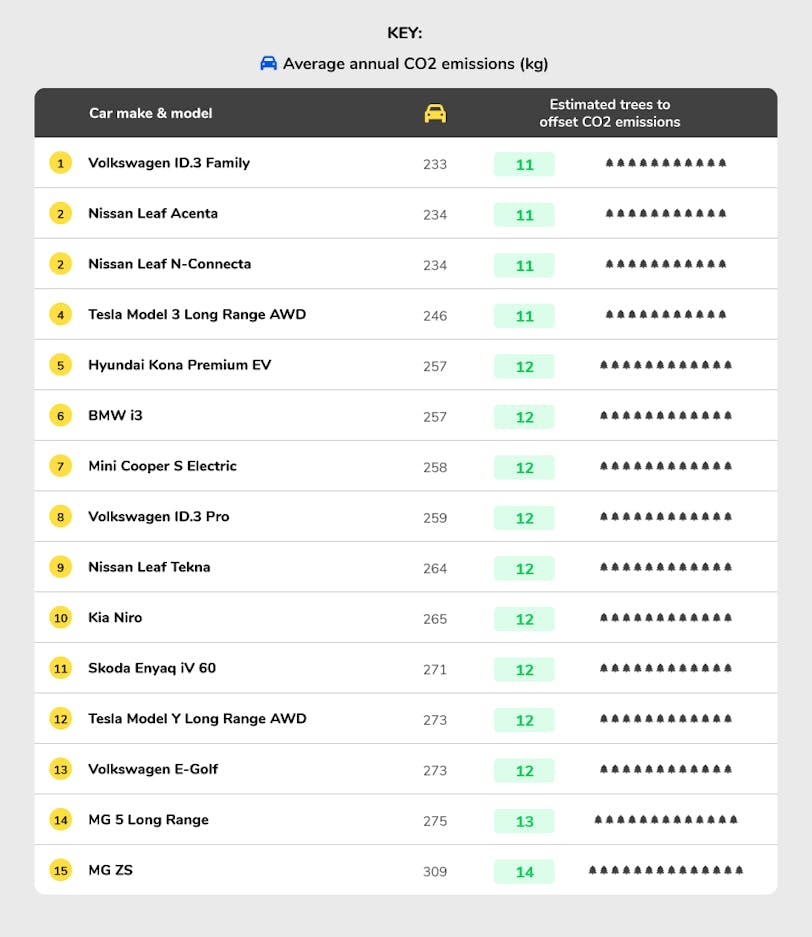
Methodology
We started by researching the 100 most popular licensed cars in the UK, by using Gov.UK Vehicles at the end of the quarter by licence status, body type, make, generic model and model: Great Britain based on the number of each car licensed as of 2022 Q3. For the seed list for our all-time worst CO2 emitting cars, we used lists from Business Insider and Forbes - all vehicles omitted from our list were due to a lack of CO2 emissions data.
Using these lists, we then used Parkers to get the CO2 emissions for each vehicle. We then took the most recent average mileage for the UK drive using: Annual mileage of cars by ownership, fuel type and trip purpose: England, 2002 onwards, taking the “total” average mileage of 5,400 miles. Using this we were able to calculate the annual emissions produced by each vehicle in kilograms.